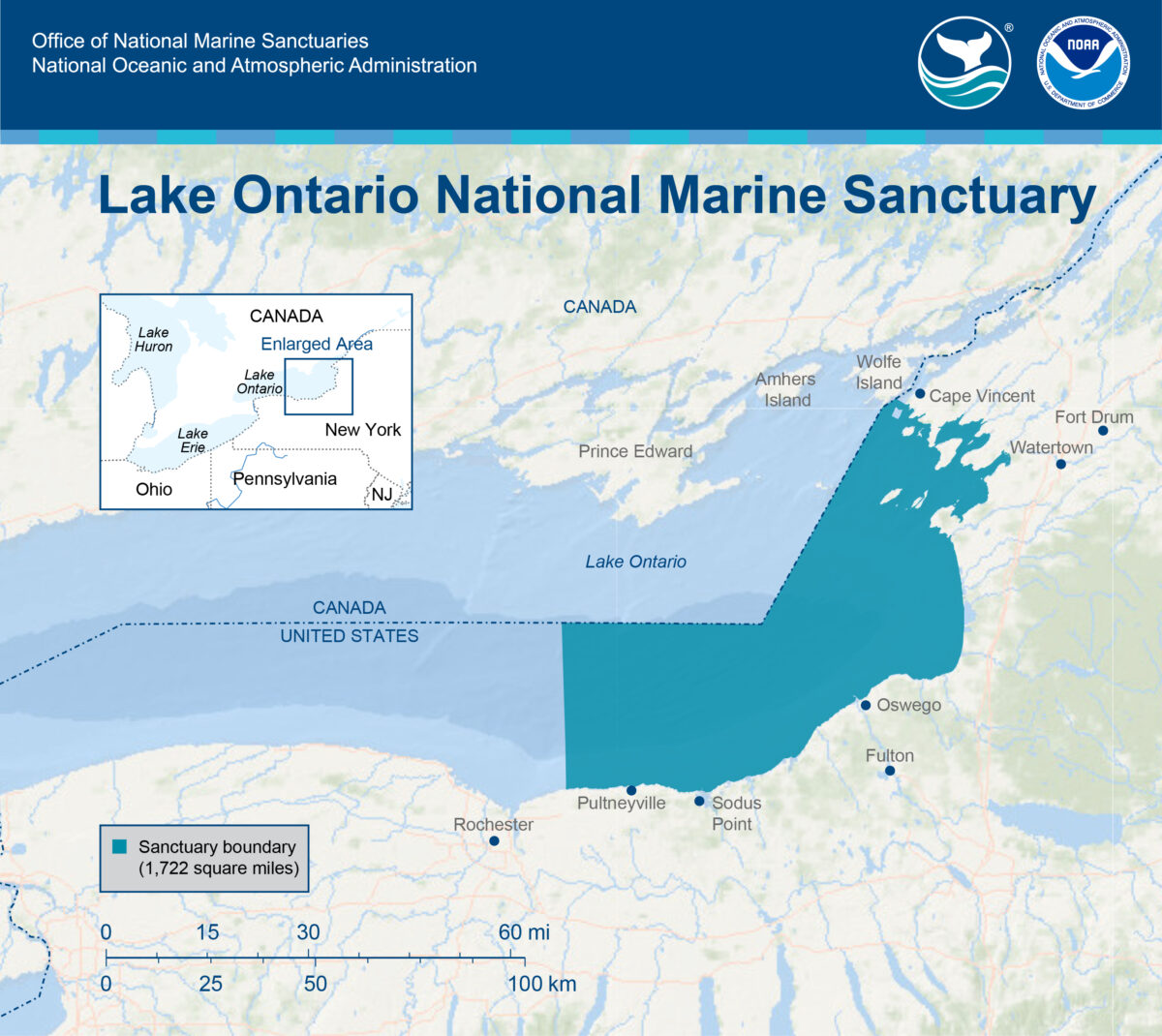Did you know that a national park exists along the eastern shore of Lake Ontario, but that it’s underwater? Due to the dozens of historical underwater shipwrecks – and one submerged aircraft — the Lake Ontario National Marine Sanctuary was designated in 2024 by the U.S. National Oceanic and Atmospheric Administration.
What does that mean?
The designation will make it easier for divers to explore wrecks in a way that preserves them from damage as well as create ways for everyone to see what lies beneath via underwater drones that will send video to the surface. Federally funded mooring buoys will be placed around accessible wrecks, allowing divers to tether their boats to the sites without dropping anchors that could damage fragile historic relics.
What’s down there?
More than 40 known shipwrecks and one downed aircraft are along the bottom of Lake Ontario from its southeastern corner Oswego, New York, to the Cape Vincent, New York, where Lake Ontario flows into the St. Lawrence River. There are another 19 wrecks and three aircraft thought to be within the boundary 1,700-square-mile sanctuary but are undiscovered. The wrecks represent two centuries of modern history. Eastern Lake Ontario has long been a significant commercial shipping corridor into the interior of North America. It’s shores were also the sight of skirmishes between U.S. and British forces during the War of 1812. Additionally, archaeological sites of religious and cultural significance to Indigenous Peoples are likely located in the area and are still undiscovered.

How can the sanctuary be enjoyed?
Eastern Lake Ontario is a rural area known for its long, sandy and shallow beaches. The area is popular among second-home owners who enjoy “lake life” that’s a little bit quieter than the upper St. Lawrence River portion of the 1000 Islands. Visitors to eastern Lake Ontario communities including Cape Vincent, Chaumont Bay, Henderson Harbor, Sackets Harbor and Three Mile Bay are drawn by the long beaches accessible at state and private parks, quaint downtowns, recreational opportunities such as fishing, diving and paddling. They overnight at boutique hotels and motels, cottage colonies, house rentals and campgrounds. Attractions include the Sackets Harbor Battlefield and Fort Ontario.
In time, the National Oceanic and Atmospheric Administration will erect mooring buoys near shipwrecks to allow for more sustainable diving and create video-viewing locations for visitors to see what lies beneath the deepest wrecks that require high levels of diving experience as well as those that may not be accessible to humans at all.
To learn more about the Lake Ontario National Marine Sanctuary, visit the NOAA website page.
